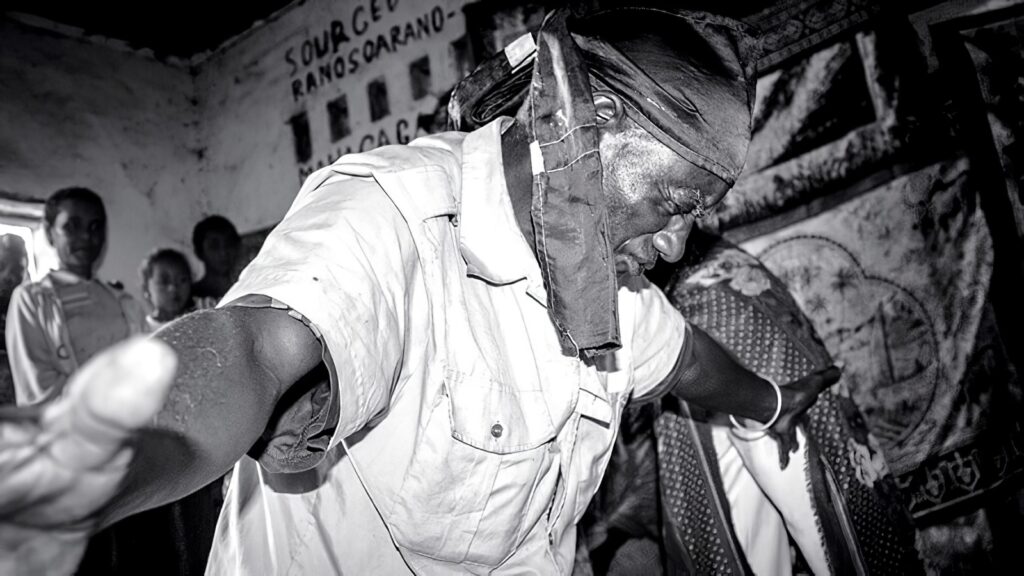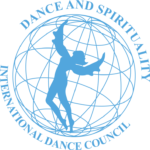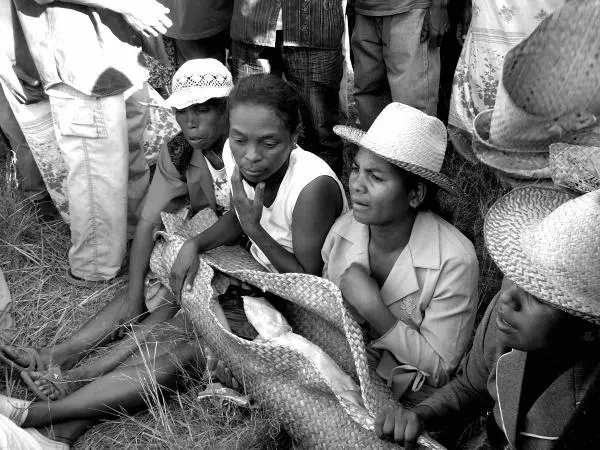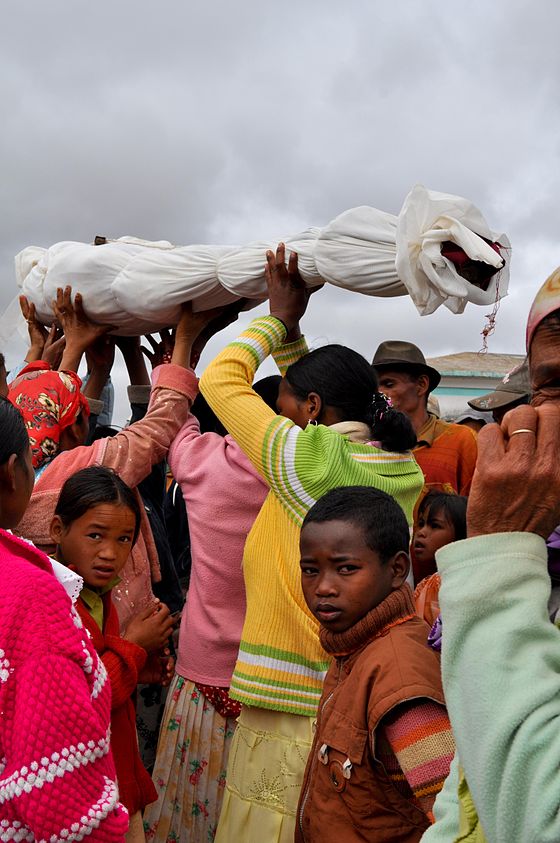Madagascar
The culture of Madagascar is an amalgamation of various cultures of its multi-ethnic population. The culture of the country reflects the origins of the Malagasy people and exhibits striking resemblance in certain aspects with the cultural practices of Southeast Asians and East Africans.
The culture of the country is also influenced by the cultures of the Arabic, Indian, French, English, and Chinese settlers in the country.
Malagasy people believe in the existence of a creator god, whom they call Zanahary, or Andriamanitra, «the perfumed prince». But this god is far away, so we speak rather to the ancestors who are the true mediators between men and the supernatural world. They are invoked in all ritual
occasions to protect their descendants like in “famadihana” or “Tromba
List Of Dances
Famadihana
Famadihana is a fascinating funerary tradition practiced by the Malagasy people of Madagascar. Famadihana, which translates to “the turning of the bones,” involves a ritual where families bring forth the bodies of their deceased ancestors from family crypts or graves. The bodies are then rewrapped in fresh cloth and next, accompanied by live music, the families carry the wrapped corpses through the streets and dance with them. Finally, the remains are returned
to their resting places.
Famadihana celebrates the life lived by the deceased: the custom is based on the belief that the spirits of the dead join the world of the ancestors after the body’s complete decomposition and appropriate ceremonies. This ritual typically occurs once every five to seven years, bringing extended families together in celebrations of kinship.
Origins and Decline:
Famadihana appears to have originated in its present form around the 17th century. It may be an adaptation of premodern double funeral customs from Southeast Asia and Oceania. However, the practice is on the decline due to the expense of silk shrouds and changing beliefs. Early missionaries discouraged it, but the Catholic Church now regards Famadihana as purely cultural
rather than religious. Some Malagasy still value it as a way to respect the dead and reunite families across the country.
Plague Connection:
Famadihana has also been associated with pneumonic plague transmission in the region. The Malagasy government has issued rulings against the practice for individuals who died of plague, but some people continue to ignore this decree.
In summary, Famadihana is a beautiful and complex tradition that reflects the Malagasy people’s deep connection to their ancestors and their cultural heritage. Dancing with the dead becomes a way to honor and remember those who have passed away.
Reference : HADITHI Africa “Read”
MADAGASCAR
Region:
Ethnic group:
Malagsy people
Tromba

MANIFESTATION OF THE TROMBA
The tromba ritual is always accompanied by musicians who play the accordion and drums. At the start of the ceremony, these musicians begin their spectacular singing and the master of ceremonies sits in the middle of the room and concentrates. Various songs are made and the spirit manifests when it identifies music that seems particular to it. First, the host experiences muscle spasms, followed by convulsive disorders. Then he loses consciousness for a period of time. Then comes the change in behavior, his eyes become different and he starts following the rhythm of the music while dancing. It is in this stage that the spirit is said to ride the shaman or literally in Malagasy “mihetsika tromba”.
The possessed person begins to take on the same voice as the spirit that dwells within him. He expresses himself by asking for offerings and then transmits advice to the living or warnings or even conveys favorite messages. When the spirit is no longer in possession of the medium, it no longer remembers anything or all the words and gestures it has made
THE VALUE OF THE TROMBA
The Malagasy believe that after their death, ancestors watch over their descendants. This is the reason why they are objects of veneration through several practices such as Famadihana, Joro, Tsikafara, Tromba etc. But regarding the Tromba, it is a symbol of connection between the living and the ancestors. According to the Ntaolo (literally the elders), Malagasy society is not limited to the world of the living, it also includes that of the dead which they called the life beyond or the invisible life. This is why, for them, the dead and the living help each other. The living would need
ancestors to live and the deceased would need the living to give them access to the place of “Razana mitahy” (literally benevolent ancestors).
THE «TROMBA» (or the manifestation of the survival of the royal ancestors) is part of the traditional rites that are still practiced today. Through mediums, the deceased kings transmit messages to their descendants or to the whole country. The «tromba» is usually in the evening, outdoors or in a specific location dedicated to this purpose. Anyone can attend. The main actors are musicians whose rhythms of drums and accordions favor the entry into trance of the mediums. Throughout the ceremony, complete silence is required from the spectators.
The tromba begins with slow or plaintive music sounds then, cadenced. At first, the mediums sitting on the floor, in the middle of the audience, seem to be elsewhere. They concentrate. As the pace accelerates, they change their behaviour. Then they convulse and struggle like horror actors. Then they can’t control their bodies. Their eyes roll back and their voices change little by little to resemble exactly those of the dead who inhabit them. Then come short or long messages from the forefathers.
A medium can be inhabited by one or more spirits. It happens that a succession of voices of men or women, children or adults come out of their mouths during the tromba ceremony. Being considered the intermediary between the dead and the living, the tromba thus strengthens the alliance with the royal spirits and ensures the exchange between the ancestors and their descendants.
The Sakalava is an ethnic group best known for the practice of this most mysterious rite of possession. In the tromba, generally speaking, a spirit which comes to seek temporary refuge in the body of a still living person.
The tromba ceremony is mainly based on adorcism and trance. The master of ceremonies called a “saha” or diviner uses the trance to identify the spirit possessing the person and determines the reason for this possession. This spirit can be a deity of the land ( geniuses of water, fire, air and earth, the genies of air and earth “tiñy”, “kalanôro”, “vazimba” or even “kokolampo” ) or spirit of a deceased person who became an ancestor.
AUTHOR : KEVIN EBELLE
References :
madagascar-green-island-discovery.com Read
generationvoyage Read
MADAGASCAR
Region:
western and northwest region of the island, in a band along the coast
Ethnic group:
Sakalava


